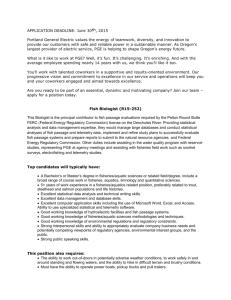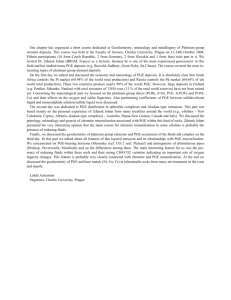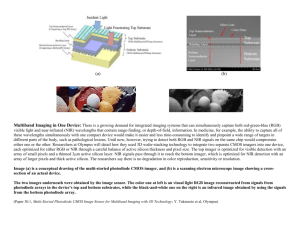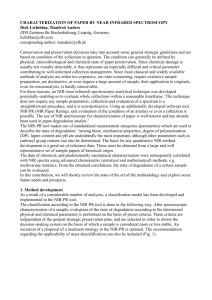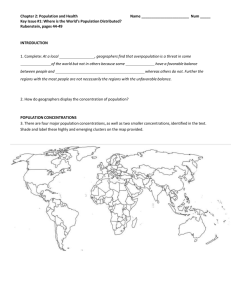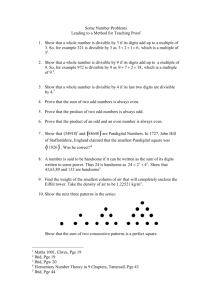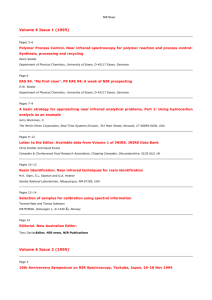APP_39189_sm_SuppInfo
advertisement
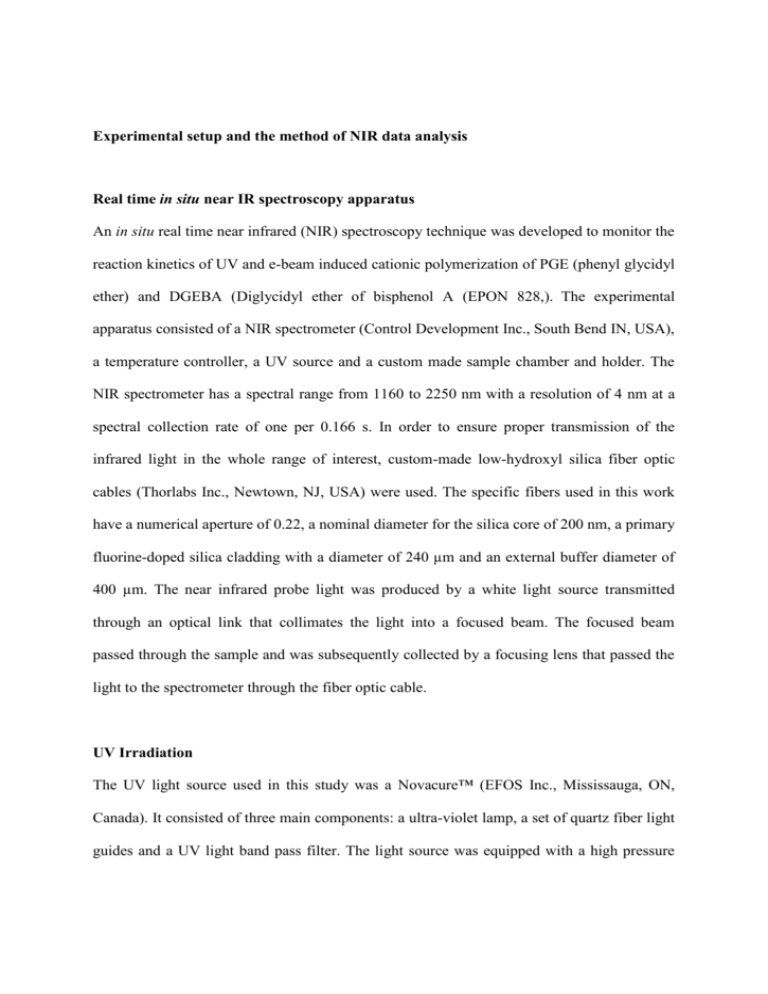
Experimental setup and the method of NIR data analysis Real time in situ near IR spectroscopy apparatus An in situ real time near infrared (NIR) spectroscopy technique was developed to monitor the reaction kinetics of UV and e-beam induced cationic polymerization of PGE (phenyl glycidyl ether) and DGEBA (Diglycidyl ether of bisphenol A (EPON 828,). The experimental apparatus consisted of a NIR spectrometer (Control Development Inc., South Bend IN, USA), a temperature controller, a UV source and a custom made sample chamber and holder. The NIR spectrometer has a spectral range from 1160 to 2250 nm with a resolution of 4 nm at a spectral collection rate of one per 0.166 s. In order to ensure proper transmission of the infrared light in the whole range of interest, custom-made low-hydroxyl silica fiber optic cables (Thorlabs Inc., Newtown, NJ, USA) were used. The specific fibers used in this work have a numerical aperture of 0.22, a nominal diameter for the silica core of 200 nm, a primary fluorine-doped silica cladding with a diameter of 240 µm and an external buffer diameter of 400 µm. The near infrared probe light was produced by a white light source transmitted through an optical link that collimates the light into a focused beam. The focused beam passed through the sample and was subsequently collected by a focusing lens that passed the light to the spectrometer through the fiber optic cable. UV Irradiation The UV light source used in this study was a Novacure™ (EFOS Inc., Mississauga, ON, Canada). It consisted of three main components: a ultra-violet lamp, a set of quartz fiber light guides and a UV light band pass filter. The light source was equipped with a high pressure 100 Watt mercury vapor short arc lamp. Diffusers were used to control UV light intensity below 100 mW/cm2. Mixtures of PGE and CD-1012 were placed in a custom made sample holder. The sample holder was an aluminium block, which was mounted on a chill plate and was equipped with cartridge heaters for temperature control. The path length of the infrared light through the resin sample was 1.6 ± 0.03 mm. UV light impinged the sample in a direction perpendicular to the infrared light. The sample thickness in the direction of UV radiation was varied between 0.60 to 0.65 mm. All experiments were conducted in such a way that at least 90% of 365 nm wave length UV light could pass through the sample. The typical size of the sample was 0.6 mm x 1.6 mm x 3.0 mm. E-Beam Irradiation The e-beam cure experiments were performed using a linear accelerator (LINAC) at the Boeing Radiation Effects Laboratory (Seattle, WA, USA). The LINAC is a uniquely designed accelerator unit that has a maximum operational power of 1.0 kW. The LINAC was tuned for 10 MeV electrons. The scan rate was 0.3 Hz and the pulse repetition frequency was 15 Hz. Samples were centered within the beam scan path. In order to avoid changing beam characteristics, the dose rate was varied by changing the pulse width of the beam from 2.5 to 10 μs, and by moving the sample vertical position relative to beam source. Film dosimetry was used to confirm delivered doses for all configurations. For the experiments reported herein a total dose of 50 kGy was delivered to the samples without interruption. Determination of Epoxy Conversion The kinetics of the UV and e-beam induced cationic polymerization of PGE and DGEBA was determined by monitoring the disappearance of NIR peak at 2209 nm (which is the characteristic of epoxy group) versus time. Figure 1 represents typical real time NIR spectra, which shows the disappearance of epoxy peak of PGE with time upon UV irradiation. A number of experiments using in situ NIR were conducted varying photo-initiator concentration, UV light intensity, e-beam dose rate and temperature. Figure 1 Typical real time NIR spectra obtained for UV induced cationic polymerization of dry PGE at 70°C. Photo-initiator concentration and UV Intensity were 0.44 wt% and 15.90 mW/cm2 respectively. Time interval between spectra was 20 s. The spectra were analyzed by calculating the ratio between the epoxy characteristic peak height at a given time and the peak height at time t = 0, defined as the instant when the UV light or e-beam was turned on. This procedure was based upon the assumption of a linear relationship between the characteristic peak height and the concentration of epoxy functional groups. This assumption was tested with a concentration versus epoxy peak height calibration procedure, in which measured amounts of PGE were mixed with known amounts of polyPGE and a linear behavior of the concentration versus mole (or weight) fraction of PGE was observed.
